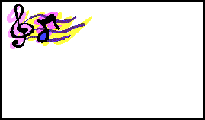The 3 Minor Chords
Mar 22nd, 2008 by admin
The 3 Minor Chords
Didn’t I say that most songs could be played with just 3 chords? In fact, the 3 basic chords may be “tweaked” a little bit here and there to give us many more other chords! As for now, let’s look at 3 minor chords that can be derived from these 3 basic chords.
We have talked about playing a note or an octave with our left hand in my post called “The Left Hand” earlier. For example, for a C chord on the right hand, we would play a C note or a C octave with the left hand. Now, Let’s tweak this a little…
If you play a C chord with your right hand, and an A note or an A octave instead with the left hand, you will get an A minor7 chord, which sounds pretty much like an A minor chord. This is how we can play a minor chord without having to learn something totally new on our right hand. All you have to remember is that the A note on your left hand must be accompanied with the C chord on the right hand.
Similarly, you can play a D minor by playing a D note with the left hand accompanied by an F chord with your right hand. Playing an E note with your left hand together with a G chord with your right hand will give you an E minor.
Figure 1: A minor (Am)
Figure 2: D minor (or Dm)
Figure 3: E minor (or Em)
So, with that, we have derived the 3 minor chords, Am, Dm and Em from our 3 basic chords.
In the C key, D is the 2nd note (“re”). Therefore, the Dm chord is considered II minor (II m) of C key. E is the 3rd note (“me”) in the C key. Therefore, in the C key, Em chord is the III minor (III m). Similarly, as A is the 6th note (”la”), and therefore Am is considered the VI minor (VI m).
To recap…
VI minor chord (VI m) = 6th bass note (left hand) + 1st chord, I (right hand)
II minor chord (II m) = 2nd bass note (left hand) + 4th chord, IV (right hand)
III minor chord (III m) = 3rd bass note (left hand) + 5th chord, V (right hand)
Deriving the above 3 minor chords (II m, III m and VI m) this way allows us to quickly produce these chords in any key, without having to learn 3 new chords on the right hand. This is provided, of course, that we are familiar with the 3 basic (major) chords (I, IV, and V) of that key.





[...] minor) chord. Similarly, IV/2 is actually II m (2nd minor) chord. Yes, we have covered that in “The 3 Minor Chords” post previously. You can go back there for revision if [...]
[...] Rule number 2: For the 2 (re), 3 (me), and 6 (la) bass notes, try accompanying them with Chord IV, V, and I respectively. That gives you the 3 minor chords. [...]
[...] 11, 2008 by Les Hmye If you remember “the 3 minor chords”, and how we play them by substituting them with the 3 basic chords, and simply combining each of [...]
[...] must have noticed that the above makes use pretty much all “the 3 basic chords” and “the 3 minor chords”. In the key of C, the above translates [...]
[...] in “The 3 Minor Chords”, we learned the following 3 [...]
[...] that my right hand doesn’t need to move much. That’s the beauty of improvising the 3 minor chords using the 3 basic [...]
[...] Em7 can be improvised by G/E (Refer to “The 3 Minor Chords” post). Therefore, the progressions [...]
[...] would notice that I play Em7 and Dm7 instead of Em and Dm. As we have learned in “The 3 Minor Chords” post, you can improvise Em7 with G/E and Dm7 with [...]
[...] minor chords can be improvised using the 3 basic major chords. See “The 3 Minor Chords” post to find out about [...]
[...] refer to “The 3 Minor Chords” post to see how ‘Am’ can be improvised by [...]
[...] Dm7 can of course be played as F/D (See “The 3 Minor Chords” post to find out how that is possible), i.e., F chord (right hand) with a D bass note (left [...]
[...] Dm7 can be improvised as F/D. See “The 3 Minor Chords” post for explanation about the [...]
[...] improvising the Am using C chord on A bass (see “The 3 Minor Chords” post), you get [...]
[...] Part (2) started with IIm instead of IV. But if you remember the minor-chord improvisation in “The 3 Minor Chords” post, indeed IIm chord is just the IV chord with a different bass note, i.e., the “re” bass [...]
[...] applying chord substitution to improvise the minor-7 chords with major chords (see “The 3 Minor Chords”), we [...]
[...] see “The 3 Minor Chords” post for the improvisation if you don’t already know [...]
[...] played Bb. This is by improvising a minor chord with a major chord. See further explanation on “The 3 Minor Chords” post if you don’t already know [...]
[...] in ‘The 3 Minor Chords’, we came across 3 more bass notes: ‘re’, ‘me’ and ‘la’. Wait a minute, in fact right [...]
[...] substituting the minor-7 with the basic chords (see “The 3 Minor Chords” post), we get… F –> C/E –> F/D –> F/C –> G/B –> [...]
Hi Dude,
Your way of teaching is very good!
Thank you!